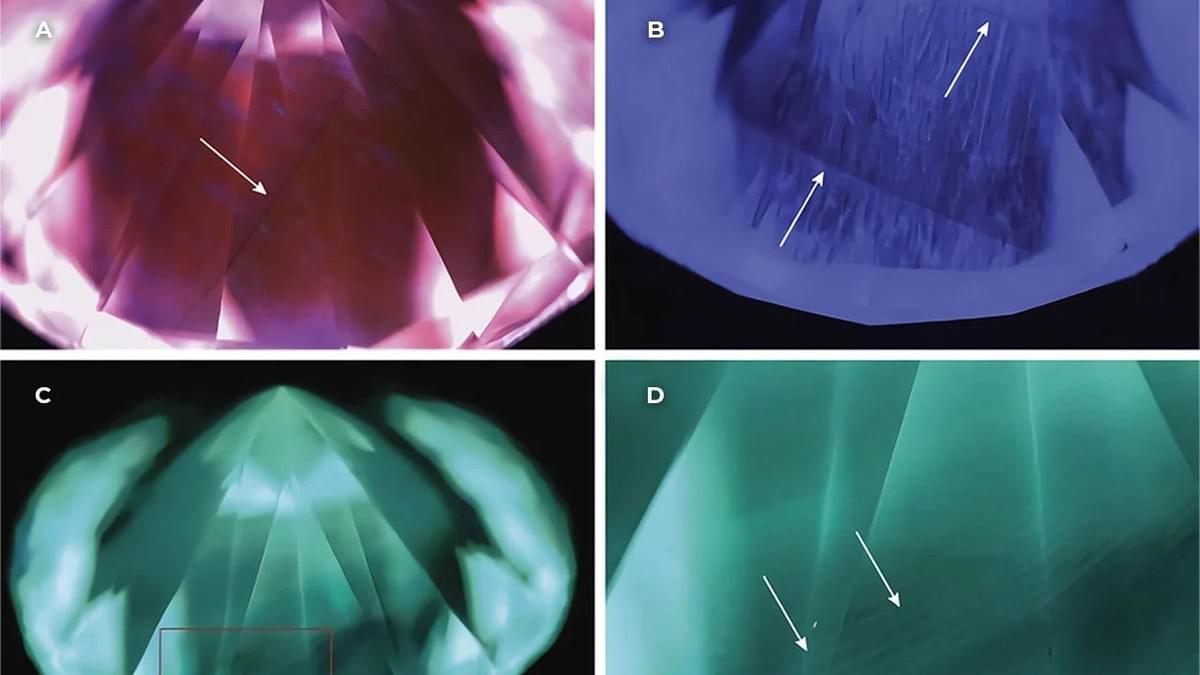
Four natural and synthetic diamonds received at the Dubai lab of the Gemological Institute of America (GIA) for updated services turned out to be imposters bearing fake inscriptions.
Upon first examination of the stones, the lab noticed inconsistent font styles and placement of the GIA inscriptions, proving they were not authentic, according to an article in the Fall issue of Gems & Gemology, the institute’s quarterly journal. The diamonds had been carefully selected to match the features listed on the original reports, the GIA explained. However, there were subtle differences in their color grades, measurements and other characteristics. Additionally, all the diamonds from the original reports were type Ia, while the submitted stones were type IIa.
The first two fraudulent diamonds were both natural but had undergone High Pressure-High Temperature (HPHT) treatment to improve their color. For instance, one of the originals was a 1.07 carat of E color and VVS1 clarity with cloud, pinpoint and feather inclusions. Meanwhile, the fake one was a 1.07-carat, E, VS1 stone containing feather inclusions and internal graining.
The third was a lab-grown, chemical vapor deposition (CVD) diamond that had been subjected to post-growth HPHT processing but had arrived with the inscription number of a natural diamond. The final stone was also a CVD stone posing as natural, the GIA said.
“Considering all evidence, we concluded that two of the four stones were laboratory-grown diamonds, and the other two were HPHT-processed natural diamonds,” the GIA added. “All four diamonds were not the same natural diamonds as described in their accompanying GIA grading reports. In accordance with GIA procedures, the counterfeit inscriptions were crossed out and new report numbers were assigned. These cases highlight the importance of verifying inscription authenticity because a fraudulent inscription could be overlooked by simple visual examination.”
Main image: The four submitted diamonds under inspection. (Gemological Institute of America)
